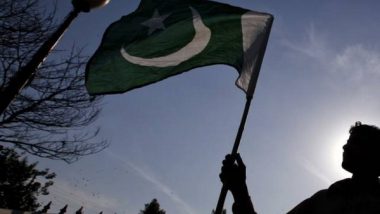Islamabad, April 3: A new report by World Bank stated that low human capital investments will limit the realisation of Pakistan's ambition to become an upper-middle-income country by 2047, reported Dawn.
According to the Pakistan Human Capital Review, "If Pakistan continues on its current trajectory in human capital development, its GDP per capita would grow overall by a mere 18 per cent through 2047, the 100th anniversary of its founding." What's Behind Pakistan's Family Planning Stigma?
Pakistan's wealth comprises 61 per cent of human capital, but its levels of human capital are among the lowest in the world. Prior to the Covid-19 pandemic and the floods of 2022, an estimated 75 per cent of Pakistani children lived in learning poverty and were unable to read and comprehend a basic tale for their age by the time they turned ten, as per Dawn. Pakistan Economic Crisis: Mayhem in the Cash-Strapped Country Amid Rising Inflation, Cost-of-Living.
It was projected that Pakistan's per capita might increase by 32 per cent if it can increase human capital investments and raise its HCI value to that of its peers. Yet, if Pakistan increases both the quality of its people resources and how they are used, putting adults in jobs other than farming, GDP per capita might increase by 144 per cent or eight times more than under the status quo.
The report found that by investing in its people and their human capital, Pakistan may experience significant economic growth and development. Yet, the truth is that Pakistan has a low human capital and that it has only slightly improved over the past three decades. Disparities in human capital results between the wealthy and poor, men and women, in rural and urban areas, and among the provinces have persisted or grown over time, according to Dawn.
Early childhood development outcomes in Pakistan are low in comparison to middle-income countries. According to their parents, only 40 per cent to 59 per cent of young children are developmentally on track, compared to an average of 75 per cent in peer countries, depending on the province.
Almost 40 per cent of children under the age of five are stunted, and 18 per cent are wasted. Less than one out of every five kids enrols in early childhood education.
Of Pakistan's school-age population, an estimated 20.3 million are not enrolled. Before the Covid-19 pandemic and the 2022 floods, Pakistan's learning poverty rate--the proportion of kids who can't read and comprehend a brief, age-appropriate text by the time they're 10--was 75 per cent, which is more than 19 percentage points higher than the average for lower-middle-income nations. Learning poverty is thought to have increased to 79 per cent after the pandemic and the recent floods are taken into consideration.
Food intake, environmental health, and care for children and women are the three key factors that determine nutrition, and just a tiny percentage of Pakistani children under 2 have adequate levels of each. In Pakistan, there aren't many kids that have multiple inadequacies; more than 26 per cent of kids don't meet the standards for any of the three determinants, and only 2 per cent of kids meet the standards for all three dimensions.
About ten years of advancements in both boys' and girls' human capital have probably been undone by the pandemic. Models that take the pandemic into account predict that Pakistan's HCI value would drop from 0.41 to 0.37, below its 2012 level.
The prime issue is a reduction in the quantity of schooling due to dropouts and in quality, both of which have been affirmed by empirical studies, Dawn reported.
(This is an unedited and auto-generated story from Syndicated News feed, LatestLY Staff may not have modified or edited the content body)













 Quickly
Quickly





















